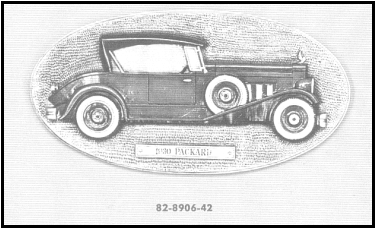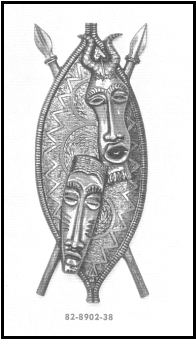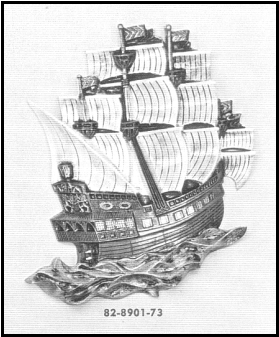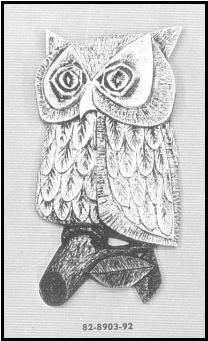By Dewayne Imsand
In 1967, David Chase of Chase Enterprises acquired the Nelson McCoy Pottery Co. As is always the case, the new owner had his own ideas about what the company should do and how it should be run. One of the new things “imposed on the pottery” was the use of water extended polyester to produce several new product lines. However, the idea did not turn out as envisioned – in fact it failed. Here is the story.
Around the time Chase bought the McCoy pottery and made it a subsidiary of the Mount Clemens Pottery, he also purchased a small vacuum plating company. This company was moved to the McCoy pottery and it set up shop there. (I wrote about the vacuum plating idea in the October 2003 Journal.) But, in addition to vacuum plating, the company also produced molded pieces for McCoy using water extended polyester rather than clay. For simplicity sake, consider water extended polyester as just plastic.
The first items produced by the McCoy pottery using the new substance were the five snack tray bases shown at the bottom of the following page. These snack trays, which were advertised as the “WOODTONE LINE,” came out in 1971. Shown below is the Woodtone Line price list. The line was discontinued after only one year.

The next plastic products were a group of wall decorations and mirrors. These products were designed by “Aladar” who is better known as Al Klubert. Several samples are included herein, but the full catalog pages are shown in the book by Craig Nissen entitled, “McCoy Pottery Wall Pockets & Wall Decorations.” These pages show all of the wall plaques and mirrors produced and all the available colors.
Just as in the case of the plastic trays, the wall decorations and mirrors evidently were not a big hit with the public. They too, were discontinued after only one year. According to Nelson McCoy “this venture cost a lot of money in labor, development, sales and advertising, etc.” But it was “a product line that was inferior, and warped badly with age.” Maybe this, together with the fact that “sales were less than fair” explains why these plastic items are rarely seen for sale in antique shops and malls. But, be on the look out because one never knows what will turn up.






